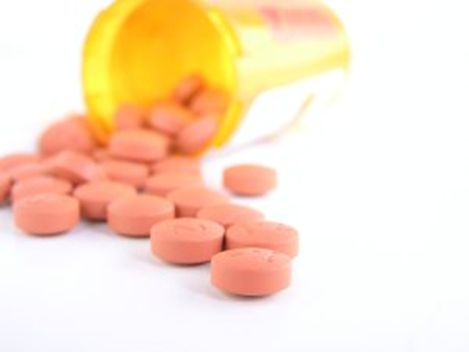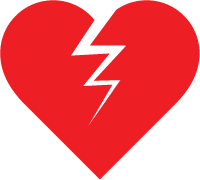At Home After a Catheter-Based Procedure (PCI – Stent – TAVI…)
- Home
- »
- Valvular & cardiovascular diseases
- »
- At Home After a Catheter-Based Procedure (PCI – Stent – TAVI…)

Catheter-based procedures include several modern techniques used to treat different heart conditions. Among them are angioplasty (with or without stent), coronary stent placement, transcatheter aortic valveThe aortic valve is located between the left ventricule and the aorta. It is one of the four valves ot the heart. >> replacement (TAVI), as well as other so-called “structural” procedures.
All these techniques share the advantage of being minimally invasive, performed under local anesthesia, and allowing for a faster recovery than open-heart surgery. They often mark an important turning point in a patient’s life, as they improve bloodBlood is composed of red blood cells, white blood cells, platelets, and plasma. Red blood cells are responsible for transporting oxygen and carbon dioxide. White blood cells make up our immune defense system. Platelets contribute to blood flow or correct a damaged valve.
Going back home is a key step. Wound care, medication, resuming activities, and medical follow-up all play a vital role in consolidating the benefits of the procedure and preventing complications. This guide provides clear and accessible instructions to ensure a safe and smooth recovery.
👉 Read also: Angioplasty (PCI), TAVI, PFO closure
Returning home: a key moment
Before discharge, the medical team takes the time to answer questions and reassure the patient. However, after such an experience, the emotion and the amount of information received can make it difficult to remember every detail.
Even if written instructions are provided, it is normal not to recall everything. This simplified summary highlights the most important points to ensure a safe and smooth recovery at home.

Care of the puncture site
Before leaving the hospital, the insertion site is checked. In most cases, it is the radial artery at the wrist. If this route could not be used, access is obtained through the femoral artery in the groin.
Regardless of the entry point, the site should remain smooth, without bleeding, although it may be somewhat tender for a few days.
-Situations requiring immediate action
- Bleeding: apply firm pressure with your fingers for 10 to 15 minutes. During the first few hours, limit movement of the affected arm or leg. If bleeding continues despite compression, call 911.
- Compromised circulation: if the hand or leg becomes cold, pale, bluish, and painful, this may signal a serious problem. In that case, call 911.
- Bruising: a hematoma is common. Its color changes (blue → purple → green → yellow) before fading within one to two weeks. However, if the bruise enlarges, is accompanied by a firm or painful lump, consult a healthcare professional promptly.
- Infection: a site that becomes red, warm, tender, and is accompanied by fever, chills, or discharge requires medical evaluation.

-General recommendation
- Do not immerse the puncture site in water (bath, pool) for 3 to 4 days after the procedure. Showering is allowed.
-If the procedure was done through the wrist
- Avoid bending or straining the wrist for 8 to 12 hours after the intervention.
- Remove the adhesive dressing (bandage) after 24 hours.
- Do not lift loads heavier than 5 kg (12 lb) for the first two days: this includes grocery bags, children, heavy objects, or repeated wrist movements (e.g., screwdriver, hammer).
-If the procedure was done through the groin
- The pressure dressing is usually removed before hospital discharge.
- The adhesive bandage can be taken off after 24 hours.
- Walking is permitted, but avoid uneven ground for the first three days.
- Stairs can be used, but in moderation during the same period.
- Intense physical activity (sports, strenuous exercise) should be postponed for several days.
- If the trip home by car lasts more than one hour, plan to stop every hour to stretch your legs.
Medications to Take After the Procedure
-Antiplatelet drugs
These medications are essential: they prevent the formation of clots inside the implanted material (such as a coronary stent or a device used in a structural procedure like TAVI or PFO closure) and reduce the risk of complications.
- A dual therapy is usually prescribed for a period determined by the cardiologist who performed the procedure. It always includes aspirin, combined with either ticagrelor, prasugrel, or clopidogrel (Plavix).
- This combined treatment is indispensable. It should never be stopped, except on the recommendation of a healthcare professional who knows the details of the procedure performed.
- Aspirin alone should not be discontinued without medical advice.
- The second medication is equally crucial: stopping it or skipping doses without supervision can have serious consequences.
- If you forget a dose, take it as soon as you remember. If it is almost time for the next dose, do not double it—just continue with your usual schedule.
- The most common side effects are easier bruising, small nosebleeds (especially in dry weather), or unexplained shortness of breath.
👉 Read also: Antiplatelet therapy

-Other cardiovascular treatments
The medications you were already taking before the procedure are generally continued, unless your doctor decides otherwise.
-Anticoagulants
If you are already taking bloodBlood is composed of red blood cells, white blood cells, platelets, and plasma. Red blood cells are responsible for transporting oxygen and carbon dioxide. White blood cells make up our immune defense system. Platelets contribute to blood thinners (Coumadin, Xarelto, Eliquis, Pradaxa, Lixiana), the cardiologist or your treating physician will have specified before discharge whether the dose needed adjustment.
-Metformin
For people with diabetes, metformin is usually stopped the day before the catheter procedure and restarted 24 to 48 hours later. Specific instructions are provided at hospital discharge.
Chest Pain
It is possible to feel discomfort or pain in the chest during a catheter-based treatment, such as angioplasty. The stretching of the artery by the balloon, the placement of a stent, or even the blockage of small side branches can cause this sensation. In most cases, it disappears within an hour.
After the procedure, any new pain or pain that becomes more intense should be reported immediately to the healthcare team.
In some people, symptoms during exertion (pain, shortness of breath) may persist despite the procedure performed. This does not necessarily mean that the treatment has failed, but rather that coronary arteryThe two coronary arteries, the right and the left, form the blood network that supplies the heart with oxygen and nutrients. They are located directly on the surface of the heart and branch into smaller vessels that disease is still present. These situations should be discussed with the treating physician.
⚠️ A sudden, continuous chest pain that does not respond to nitroglycerin and is accompanied by cold sweats, nausea, or vomiting is a medical emergency. Call 911 without delay.
Read also: Stent thrombosis

Resuming Regular Activities
After a catheter-based procedure, most daily activities can be resumed gradually. Light tasks such as walking, small errands, or preparing meals are usually possible right away at home, as long as they do not cause discomfort.
More demanding efforts — heavy housework, sports, intensive gardening — should be postponed for several days to a few weeks, depending on the procedure performed and the catheter access site.
The key is to progress step by step, listen to your body, and follow the medical team’s advice.
Sexual activity
Sexual activity can usually be resumed without any particular delay after a same-day procedure. When the groin approach has been used, some adjustments may be needed at first to avoid straining the area.
- Some medications prescribed after the intervention may affect sexual function. If this worries you, speak with your healthcare team, but never stop a medication on your own.
- ⚠️ Drugs for erectile dysfunction (such as Viagra, Cialis, or Levitra) can have dangerous interactions with certain heart medications, especially nitroglycerin. Never use them without first discussing it with your physician or cardiologist.

Healthy lifestyle habits
Angioplasty is not just a one-time treatment: it is also an opportunity to adopt new habits that lower the risk of another cardiac event. These changes can make a major difference:
- Complete smoking cessation.
- A balanced and varied diet.
- Regular physical activity adapted to your condition.
- Proper control of high bloodBlood is composed of red blood cells, white blood cells, platelets, and plasma. Red blood cells are responsible for transporting oxygen and carbon dioxide. White blood cells make up our immune defense system. Platelets contribute to blood pressure, cholesterolCholesterol is essential for the proper functioning of the human body, but it can also have harmful effects if present in excess. >>, and diabetes.
Read also: Healthy lifestyle habits

Driving
After a catheter-based procedure, such as angioplasty, it is recommended not to drive during the first two days.
Some structural interventions, however, may require a longer period of abstinence.
Returning to Work
Going back to work mainly depends on the type of occupation. For a sedentary job or one with little physical effort, resumption can usually happen sooner. In contrast, physically demanding or stressful activities may require more time.
On average, expect one to two weeks off, depending on the procedure performed and the advice of the medical team.

Traveling
It is best to avoid long trips immediately after a catheter-based intervention, whatever the type. Before planning a journey, it is advisable to discuss it with your doctor.
Once recovery has started and the treatment is considered successful, traveling is usually safe. However, it remains important to declare any heart procedure when purchasing travel insurance.
👉 Note: stents and other devices used in structural repairs are too small to be detected by airport security scanners. They do not cause any problem when passing through.

Medical follow-up
A follow-up appointment is usually scheduled with the cardiologist or another healthcare professional within a month of the procedure. A detailed summary of the intervention is sent to them.
A copy is also made available to the family physician, provided the patient has given the hospital the doctor’s contact information. This ensures continuity of care and good communication between healthcare providers.
Read also: About coronary stents






















